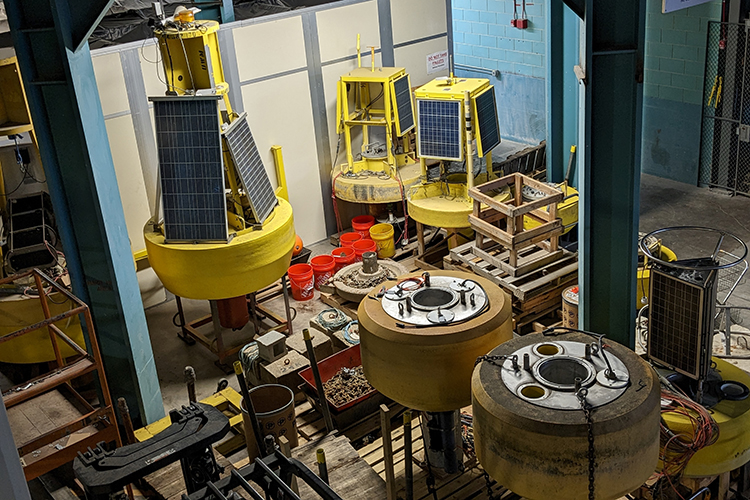The School of Freshwater Sciences launches and maintains a number of buoys in Lake Michigan, which provide information for research and recreation from late spring through fall. What happens to the buoys during the winter?
According to Jessie Grow, freshwater sciences research specialist and marine technician and UW-Milwaukee alumna, winter duties depend on what catastrophic failures occurred during the buoys’ deployment periods.
“Generally, they are each cleaned and dismantled prior to hibernation,” she says. “There are a few sensors that I send in every year for factory service and repair as needed, but many of them do not require too much fussing, and they just snooze the winter away.”
Winter is also when she evaluates each system for potential upgrades. For example, last winter Grow upgraded the two large buoys’ internal data loggers, which meant redesigning and rewiring the entire innards and learning a new software system for data management. This year she is working on upgrading the camera system for the Atwater Beach buoy. If all goes well, she will replicate the new camera system for Green Bay.
Other winter tasks involve data quality assurance, control and curation from the previous season and updating the Great Lakes Observing System (GLOS) web page, which you can check out here: uwm.edu/glos/.
